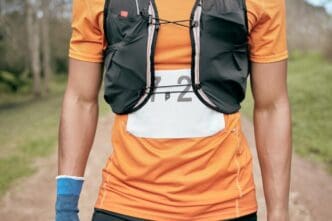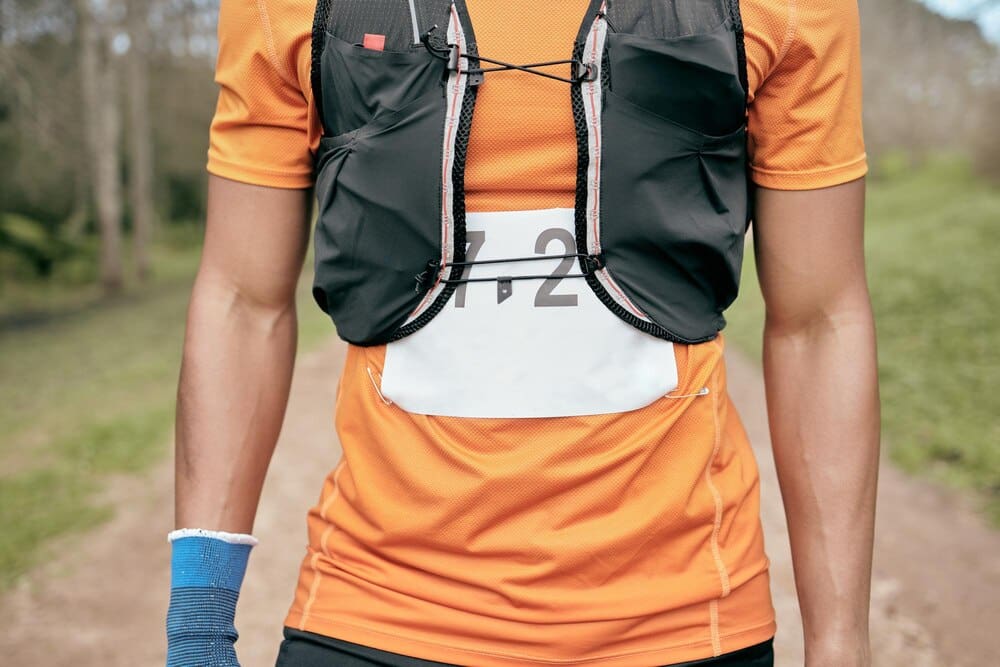For any runner looking to extend their distance, tackle a trail, or simply run more comfortably, the running vest or hydration pack has become an indispensable piece of gear. These wearable solutions are designed specifically for runners to carry water, nutrition, and essentials like a phone and keys, completely hands-free. They are used by everyone from marathoners and ultramarathoners needing to be self-sufficient between aid stations to neighborhood joggers who want to stay hydrated in the summer heat. Ultimately, a running vest solves the fundamental challenge of carrying necessary items without compromising running form, enabling athletes to perform better, stay safer, and enjoy their runs more.
Why Every Runner Should Consider a Hydration Vest
For years, the options for carrying water were limited to cumbersome handheld bottles or bouncing waist belts. Handhelds can create muscle imbalances and tension in the arms and shoulders, while belts often shift, bounce, and cause chafing, especially when loaded with more than one bottle.
A running vest, by contrast, distributes weight evenly across your torso, much like a well-fitted backpack. This ergonomic design integrates the load with your body, minimizing bounce and allowing for a more natural arm swing and running gait. By keeping your hands free, you can focus on form, balance, and navigating terrain.
Beyond comfort, the primary benefit is performance. Proper hydration and fueling are scientifically proven to be critical for endurance. Dehydration can lead to cramping, fatigue, and a significant drop in performance. A vest makes it effortless to sip water consistently and access nutrition like gels or chews without breaking your stride.
Finally, a vest is a crucial piece of safety equipment, particularly for trail runners or those exploring new routes. It provides the capacity to carry a phone, a small first-aid kit, a headlamp, and an extra layer of clothing, ensuring you are prepared for unexpected weather changes or emergencies when help may be far away.
Anatomy of a Running Vest: Key Features to Look For
While they may look complex, running vests are thoughtfully designed with a runner’s needs in mind. Understanding their core components will help you choose the best one for your specific goals.
Hydration Systems: Bladders vs. Soft Flasks
The method of carrying water is the most significant differentiator between vests. Most vests support one or both of the primary systems: bladders or soft flasks.
Bladders, also known as reservoirs, are soft plastic bags that sit in a dedicated compartment on your back. They typically hold 1.5 to 2 liters of fluid and deliver water via a long drinking tube that clips to the front shoulder strap. Their main advantage is the large capacity and the ease of sipping on the go without removing anything from the vest.
However, bladders can be more challenging to clean and dry thoroughly. It can also be difficult to gauge exactly how much fluid you have left mid-run, and refilling them at an aid station during a race can be a time-consuming process.
Soft Flasks are collapsible bottles that are typically stored in pockets on the front of the vest’s shoulder straps. They usually come in sizes ranging from 250ml to 500ml. Their biggest benefit is convenience; they are incredibly easy to refill at aid stations and you can clearly see how much you have consumed.
As you drink, the flasks collapse, preventing water from sloshing around. Many runners also like the ability to carry different drinks, such as water in one flask and an electrolyte mix in another. The main drawback is their smaller total capacity compared to a bladder.
Storage and Pockets
A vest’s utility is defined by its pocket layout. Modern vests feature a remarkable amount of storage in a compact package, with each pocket having a specific purpose.
The front pockets are for high-access items. This is where you’ll find holsters for soft flasks, stretch-mesh pockets for gels and nutrition, and often a zippered or weather-resistant pocket designed to securely hold a smartphone.
The rear compartment is for less frequently needed gear. This is where a hydration bladder is stored, along with larger items like a lightweight rain jacket, a headlamp, or a small emergency kit. Some vests have a large “pass-through” pocket at the bottom of the back, perfect for quickly stashing or retrieving gloves or a jacket without taking the vest off.
Look for specialty pockets that match your needs. Many trail-focused vests include loops or bungees for securing trekking poles. Small, designated trash pockets encourage you to leave no trace, while zippered compartments on the sides or front provide a secure spot for keys and cards.
Fit and Adjustability
A proper fit is non-negotiable; it’s the difference between a vest that feels like a part of you and one that bounces and chafes for miles. Vests achieve this snug fit through a system of adjustable straps.
Virtually all vests have two chest straps (or sternum straps) that connect the two shoulder straps across your chest. These are crucial for stability. Look for vests where these straps can slide up and down on a rail system, allowing you to position them for maximum comfort and minimal restriction of breathing.
Side straps are equally important. These straps, located under the arms, allow you to cinch the entire vest around your torso. Adjusting these properly is the key to eliminating bounce from the sides and back.
Materials and Breathability
Vests are worn directly against your body, often for hours at a time, so materials matter. The best vests are made from lightweight, open-weave mesh fabrics that are highly breathable and effective at wicking moisture away from your skin.
Pay attention to the finishing on the edges and seams. High-quality vests use soft, fleece-like materials around the neck and arm openings to prevent chafing, which can be a major issue on long, sweaty runs.
How to Choose the Right Running Vest for You
With so many options on the market, selecting the right vest comes down to an honest assessment of your running habits and needs.
Consider Your Distance and Activity
The primary factor guiding your choice should be the length and type of your typical run. Your needs for a 10k road race are vastly different from those for a 50-mile mountain ultra.
For road marathons or half-marathons, a minimalist vest with a storage capacity of 2-5 liters is often sufficient. This provides enough room for two soft flasks, a phone, and several gels, which is all you need when aid stations are plentiful.
For ultramarathons and long trail runs, a larger capacity vest in the 8-12 liter range is more appropriate. These runs often have mandatory gear requirements, such as a rain jacket, emergency blanket, and headlamp. The extra space is essential for carrying this equipment, along with more water and food for self-sufficiency between remote aid stations.
The Importance of a Perfect Fit
You would never buy running shoes without trying them on, and the same rule should apply to a running vest. Sizing is critical, and it’s not always intuitive. Most brands offer sizing based on a chest circumference measurement taken at the widest point, typically at the sternum.
Always check the manufacturer’s size chart before buying. If possible, try the vest on in a store. Load it with full water flasks and some weight in the back to simulate real-world use. Do some jumping jacks or run in place to check for any bouncing or rubbing. The ideal fit is snug and secure, but not so tight that it restricts your breathing.
Gender-Specific Designs
Many brands now offer gender-specific fits, and for good reason. Women’s vests are designed with the female anatomy in mind. The shoulder straps are often curved differently to accommodate the chest, and the chest straps may be positioned higher or designed differently to avoid pressure on breast tissue, providing a more comfortable and secure fit.
Using and Maintaining Your Hydration Pack
Once you have your vest, knowing how to wear and care for it will extend its life and improve your experience.
How to Wear It for a Bounce-Free Run
To achieve that “disappears on your back” feeling, follow a simple fitting process. First, loosen all the straps. Put the vest on and load it with your water and gear. Then, tighten the side straps first to pull the pack snugly against your body. Finally, connect and tighten the chest straps until the vest is secure but not constricting. You should be able to take a full, deep breath without difficulty.
Cleaning and Care
Proper cleaning is essential for hygiene and durability. The vest itself can be hand-washed with mild soap and cool water, then hung to air dry. Avoid using a washing machine or dryer, as the heat and agitation can damage the delicate mesh fabrics and elastic components.
Bladders and flasks require more diligent care to prevent the growth of mold and bacteria. After each use, rinse them thoroughly. For a deep clean, use specialized cleaning tablets or a mixture of warm water and baking soda or lemon juice. The most critical step is drying; use a bladder hanger or prop it open to ensure complete air circulation. Many runners store their clean, dry bladders in the freezer, as the cold temperature inhibits any potential microbial growth.
A running vest is more than just an accessory; it’s a tool that unlocks new possibilities in your running. It provides the freedom to explore farther, the confidence to stay out longer, and the support to perform at your best. By choosing a vest that fits your body and your running style, you are making a valuable investment in your health, safety, and the pure joy of the run.







